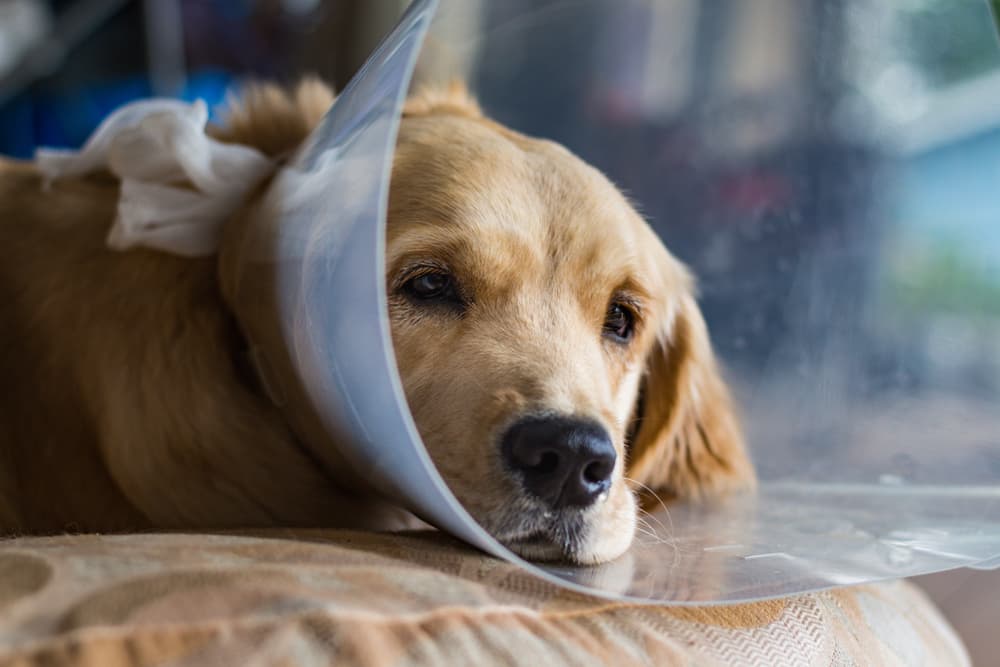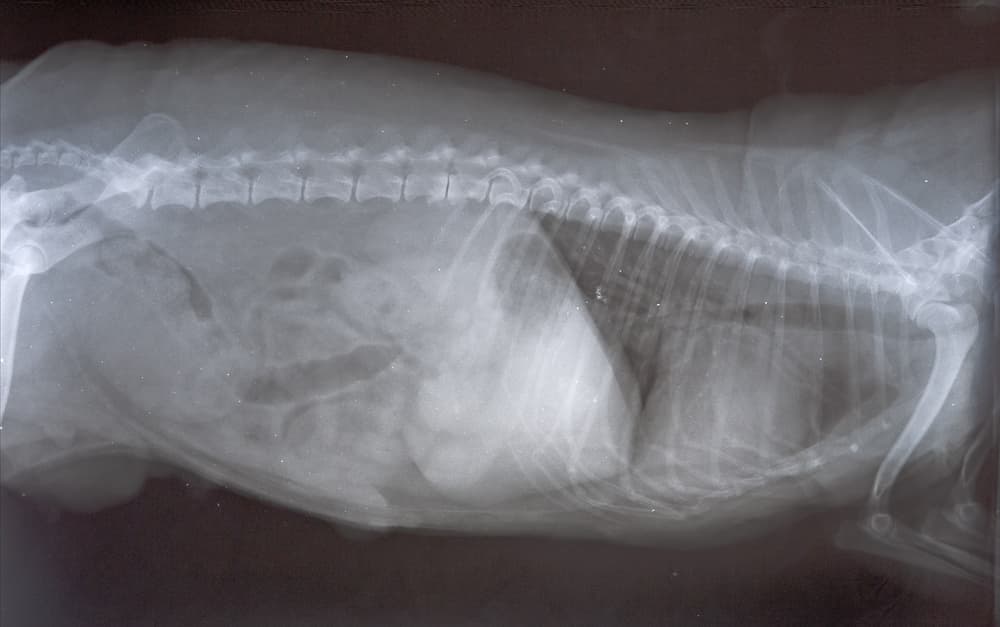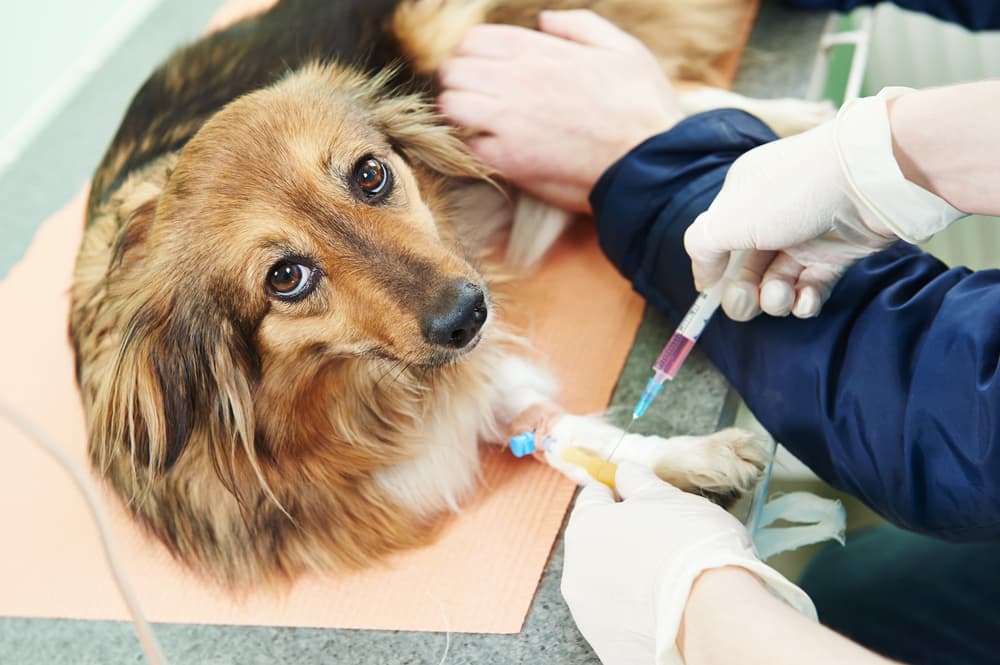Hearing that your dog has been diagnosed with breast cancer ( also called mammary Cancer the Crab ) can be scary and confusing . In the jumble of emotion that follow such a diagnosis , preferent parents may wonder what this means for their dog and what come about next . The good news is that chest cancer in dogs is ordinarily not calamitous , and about 50 pct of mammary tumour in dogs are benignant ( 1 ) .
Thetreatment optionsand prognosis for breast Cancer the Crab in firedog depend principally upon the type of tumour they have , as well as its size , location , degree , and other ingredient .
Here ’s a helpful overview that answers the questions favourite parents most commonly ask about breast cancer in dog .

What is Breast Cancer in Dogs?
What some know as breast cancer in bounder , veterinarians more commonly have-to doe with to as a mammary neoplasm or tumors . These tumors are formed by unnatural growth and grouping of cellular phone in canine mammary tissue .
Mammary tumors are most plebeian in distaff dog who are intact ( un - castrate ) or those who were spay after the eld of two . consort to data from the California Animal Neoplasia Registry ( CANR ) , mammary tumors describe for 41.7 percent of all tumors find in un - castrate dogs ( 2 ) .
Mammary tumors typically recrudesce in middle - aged and elderly dog-iron ; they are seldom find in bounder under the years of five . And while mammary tumors can acquire in male hot dog , this is also quite rare .

Causesof Breast Cancer in Dogs
internal secretion exposure is perhaps the bully factor influencing the development of mammary tumors . frankfurter who are spayed early in life have a significantly lower peril of developing mammary tumors , compared with intact females .
One field of study ( 3 ) set up the risk of developing mammary tumors to be :
Certain breeds are also more likely to develop mammary cancer , evoke a genetic component . Breeds at increase risk let in :

Obesity , especially prior to pubescence , may also increase a weenie ’s risk of developing mammary tumors subsequently in life .
Symptomsof Dog Breast Cancer
There are several symptom of dog bosom malignant neoplastic disease , but the one pet parents ordinarily notice first is the presence of a mammary tumor or tumour . Typically , favored parents might feel this while petting or train their dog , or a veterinarian might key the chunk during a routine forcible scrutiny .
These neoplasm appear as a palpable mass ( or masses ) in the mammary range , which is the set of mammary secretory organ along the remaining or right side of a dog ’s body .
Other symptoms of mammary tumour can admit :

If you notice a mass on your andiron ’s mammary chain or if your wienerwurst has other symptom of breast genus Cancer , see your veterinarian justly aside . When it total to mammary tumour , an early diagnosing can bring an important part in assist assure the dependable possible outcome for your dog .
Typesof Mammary Cancer in Dogs
Mammary tumor can be either benign ( non - cancerous ) or malignant ( cancerous ) . In dogs with mammary tumors , approximately 50 percent of these tumors are non - cancerous . These benign tumors are also known as adenomas .
However , that have in mind that roughly 50 percent of mammary tumor are cancerous . Malignant mammary tumors are usually carcinomas ( cancer occurring in a dog ’s internal organs or the skin ’s epithelial tissue ) or adenocarcinoma ( genus Cancer occurring in the secretory organ line the insides of a dog ’s organs ) .
To specify the character of mammary neoplasm present , your veterinarian will take a biopsy and submit it for histopathology at a laboratory . This is an important symptomatic footstep and is the gilt criterion for diagnosing , classifying , and grade mammary tumors in dog .

Dog Mammary CancerStagesand Progression
In accession to sampling the tumor to identify its type , determining the tumour leg is also an important part of diagnosing breast malignant neoplastic disease in bounder .
First , veterinarian conduct a physical examination to palpate the mammary chain in hunting of any additional masses . This also serve to serve evaluate the regional lymph nodes for signs of enlargement . A biopsy of the regional lymph nodes can disclose metastasis , or circulate , of the Crab to the lymph nodes .
Your veterinarian should also perform a scaffolding rating , including blood workplace , urinalysis , and ten - rays , to square up whether the tumors have spread to the lungs . Veterinarians often recommend abdominal imagination ( X - shaft of light or ultrasound ) to check for metastasis to other organs .

fortify with all of this information , your veterinarian will then determine the stage of the Crab according to the Tumor - Node - Metastasis ( TNM ) organisation . This measurement organization was created by the World Health Organization and is considered the standard in veterinary medicine for evaluate cancer stagecoach .
In this arrangement , T fend for the size of the tumour , N is the presence of cancer in the regional lymph nodes , and M is the comportment of metastasis at distant sites .
The staging includes 5 categorization ( 4 ):

The lower the number of the tumor ’s stage at the time of operating theater , the better the prospect of a proficient clinical outcome . A smaller tumour is less likely to recur or metastasise to distant sites . The sooner a mammary tumour is name and remove , the good the prognosis .
Diagnosing Canine Breast Cancer
Mammary cancer is often first identify when a favored parent or veterinarian feel a lump in a dog ’s mammary chain . When that happen , the next step is a thorough physical examination to determine the size of the mass , its exact location , and whether any other masses are present .
extra symptomatic testing may admit :
Breast CancerTreatmentOptions for Dogs
Veterinarians broadly advocate surgery as the preferred treatment for most mammary gland neoplasm in blackguard , as long as the cancer has not spread to distant sites . The type of surgery required look on the size and location of the mammary tumour and the number of mammary glands ask .
Surgery may ask removing the mass and a gross profit of normal tissue around the the great unwashed . Or it may regard off the entire move mammary gland . Your veterinarian will find out the best operative plan for your dog based on your dog ’s tumor type , the size and localisation of the neoplasm , and the bit of tumors to be removed .
Some surgeons recommend spay at the time of OR if the dog is intact , but this is controversial . Not all studies have shown an improved survival pace in weenie spay at the time of mammary tumor removal . However , spaying also prevents other unrelated disease , such as pyometra ( uterine infection ) . Your veterinary will talk about the danger and welfare of spaying with you prior to the surgical operation .

Dogs with incendiary mammary carcinoma tend to be short candidates for surgery because the microscopical cancer cells typically extend far beyond the palpable mass and , in many cases , have already spread throughout the soundbox . Studies indicate that operation does not inevitably better the endurance rate in dogs with incitive carcinoma . The most in effect treatments for inflammatory carcinoma are currently radiation therapy therapy and treatment with a non - steroidal anti - inflammatory drug ( NSAID ) . However , even with these treatments , the overall prognosis is piteous .
Cost to Treat Breast Cancer in Dogs
The cost to care for mammary genus Cancer in dogs bet on the neoplasm type , sizing , localisation , grade , stage , and recommended treatment options . In general , pet owner should expect to spend $ 1,500 - 3,000 on operating room for mammary cancer , depending on the severity of the tumor and the type of operation involved . Additional monetary value may be incurred for radiation therapy or chemotherapy following surgery .
Prognosis for Breast Cancer in Dogs
There are several factors that impact the prognosis for dogs with mammary neoplasm . Those with mammary tumors quantify less than 3 centimeter typically live longer than those with big tumor . Dogs whose mass are removed with complete tolerance ( mean no microscopic cancer cell rest ) also have a better prospect than dogs with uncompleted mass removal .
Prognosis also exasperate as the tumour phase advances ; hotdog with lowly , localize neoplasm by and large do better than those with lymph node involvement or remote metastasis . Other factors , such as neoplasm type and mark , also influence prognosis . Most significantly , pet owners should be aware that bounder with one mammary neoplasm are also likely to develop additional mammary tumor .
How to PreventBreast Cancer in Dogs
Spaying prior to the first heat importantly reduces the endangerment of developing mammary tumors later in life . Maintaining a sound lean body weight may also scale down mammary tumor risk . And , since early sleuthing and discourse can play an significant role in the final result , it ’s sound to speak with your vet about any unnatural lumps you notice on your dog , especially in the mammary chain .
References

